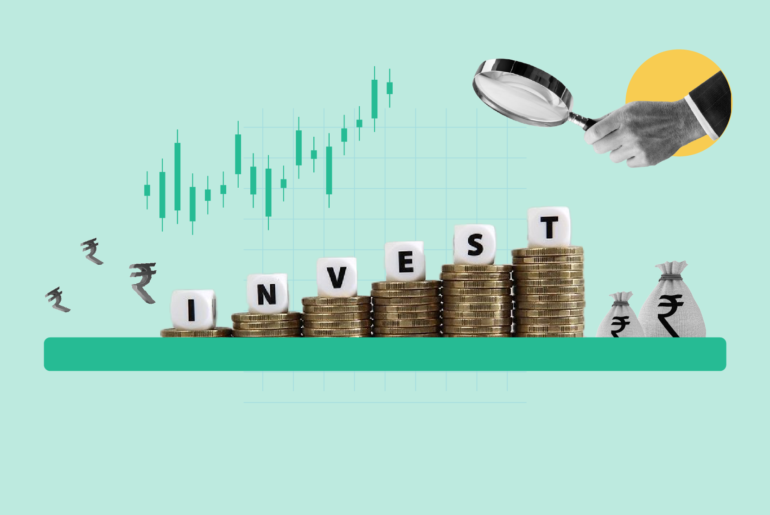Last Updated on May 25, 2022 by Neera Bhardwaj
Want to get better at option trading strategies? This article is the perfect comprehensive guide to option moneyness. Let’s start with the basics. The intrinsic value of an options contract is described as moneyness. In this article, we’ll break down this definition into simple terms.
Table of Contents
What is options contract?
Let’s begin with what ‘options’ are in options trading. Commonly referred to as options, the full term is known as options contracts. These are financial contracts between two parties specifying a future transaction on a particular asset at a specified price.
What is the value of the option?
The pricing of an option is based on two components:
- Intrinsic value
- Extrinsic value
Intrinsic value
The intrinsic value of a business or investment security defines the present value of all expected future cash flows that are discounted at the appropriate discount rate. Intrinsic valuation focuses primarily on the inherent value of a business on its own.
The intrinsic value of an option is also known as the monetary value. It refers to the difference between the strike price and underlying asset price, assuming the option is exercised immediately. Intrinsic value becomes the value of an option if it expired at this very moment.
Important situations with intrinsic value that you should know about
- When traders say an option is in-the-money, they mean it has intrinsic value
- When they say it is out-of-the-money, it means the option has no intrinsic value. You should remember that out-of-the-money options have no intrinsic value
- When traders say that the contract has expired worthless, it means an option has expired out-of-the-money
The relationships between ITM, OTM, and ATM determine the intrinsic value of the option, which is a key factor in option pricing.
Let’s assume you want to exercise the option when Nifty 50 is trading at the spot price of 11,415 CE and the strike price is 11,400 CE. Now, when you exercise this option, the money that you will make from this contract will be equal to the intrinsic value minus the premium. Therefore, the intrinsic value will be:
Spot Price – Strike Price = 11,415-11,400 = Rs 15
You will therefore earn a profit of Rs 15.
Note: The premium has not been taken into account.
Expert tip
When you are into trading options, ask this question:
If this option were to expire today, would it have any value?
If yes, then the option has intrinsic value.
Extrinsic value
Another important concept to understand when trading options is the extrinsic value. True, that it plays a less prominent part in moneyness, but it’s important to know. Among the many components of extrinsic value, you will often come across time value, or theta as it receives the most attention. It is an attributable portion of an option’s premium to the amount of time until the expiration of the option contract.
In other words, the more the time until expiration, the higher the extrinsic value of the option. Investors pay a higher premium for additional time as the contract will then have longer to achieve profitability from a favourable move in the underlying asset. When there is less time remaining until expiration, investors are less willing to pay a premium, because the stock has less time to become profitable.
Expert tip: When you are into trading options, ask this question:If this option were to expire today, would it have any value? If yes, then the option has intrinsic value. Click To TweetWhat is option moneyness?
Moneyness shows how the strike price of the option relates to the current trading price of the underlying asset. To state simply, moneyness refers to the intrinsic value of an option in its current state. Based on the relationship of the strike price to the underlying stock price at the current time, traders classify options into three distinct categories. These categories further describe an option’s moneyness.
Moneyness can be categorized into three types: in-the-money, out-of-the-money, and at-the-money. If you are entering the world of options trading, it is important for you to understand these terms as they are mentioned in every options strategy.
The three categories of moneyness
You need to master the concept of moneyness when trading options, so you should be aware that the concept of moneyness tends to get complicated when you start adding sophisticated options strategies to the mix. The three categories are driven by the relationship between the current stock price and option strike price. Let’s establish a good solid basic understanding of the categories:
In-the-money (ITM)
ITM refers to the position of the strike price against the stock price at any given time. For instance, the option is said to be in-the-money if you have a call option and your stock price is greater than the current strike price.
ITM only describes the relationship between the two prices and not the trader’s actual profitability. Therefore, if you have a put option and your stock price is lower than the strike price, then your position is in-the-money.
Out-of-the-money (OTM)
OTM describes the current relation of the strike and stock prices for your particular trade. With a call option, your position is OTM when the stock price is lower than the strike price. With a put option, it is OTM, when the stock price is higher than the strike price.
At-the-money (ATM)
When both prices are at the same level and are no different in trading in calls or puts, then the options are ATM. ATM shows a parity of price levels across stock and strike prices.
For instance, let’s suppose Nifty 50 is trading at 11,400. The ATM will be at 11,400 for both the put and call options.
In a nutshell
| Option | In the money | At the money | Out of the money |
| Call option | Stock price > Strike price | Stock price = Strike price | Stock price < Strike price |
| Put option | Stock price < Strike price | Stock price = Strike price | Stock price > Strike price |
To conclude with an expert tip and present you with an opportunity to making profits. Remember, when options are ITM, you will have plenty of profitable opportunities. Selling call options that are deep ITM always provide the opportunity to take make profit. So, take it immediately, rather than waiting until the underlying stock is sold.
- 10 Mind-blowing Facts About Harshad Mehta - May 30, 2025
- How DSP’s ETF Campaign Succeeded on Tickertape? - May 7, 2024
- Earnings Per Share Guide 2022 – Importance, Formula and Calculation - Aug 20, 2021





